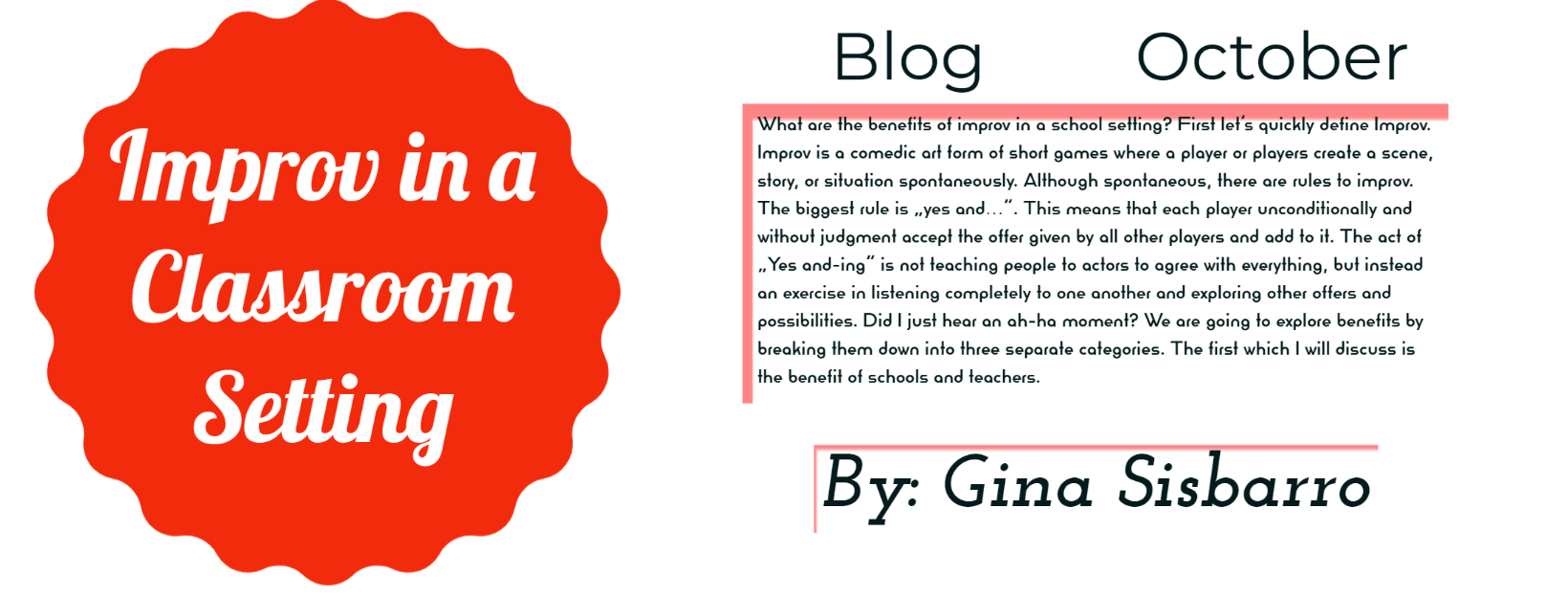-
- Supports the democratic values of the education system. Schools are considered the number one tool to develop one enculture (a group of characteristics and norms that create a culture). Most schools seek to create a culture that honors our democratic values. What could be more democratic than improv which engages all students simultaneously and honor’s each contribution.
- Acknowledges and supports diversity. Improv allows students to lend their own ideas and perspectives to the performance. When you learn to open and give of oneself simultaneously helps us accept ideas of others who differ from us. This will develop an open minded mindset which teachers seek to develop within their classrooms.
- Builds a classroom community. As in any community, work, or education, if you get the community right from the beginning of the year, everything else should fall in place and go smoothly. My community is zero-tolerance regarding bullying and collaborative learning. I need all my actors to feel comfortable and safe as well as learning to work with one another in small or large group settings. Collaboration helps students learn how to work together for the good of the group. Improv offers collaboration and the skills necessary for students to engage. Just a reminder cooperative learning a student can sometimes hide behind other’s efforts (think back to your own school projects where one or two did the work and the rest sailed on their shoestrings). Collaboration allows creating co-equal parts. It includes communication, empathy, trust, and respect. You want to transform your classroom into a supportive community of learners.
- Supports discovery learning. Most classrooms are described as “top down”. The teacher makes the majority of all the decisions; what to study, what time is spent on it, how the material is presented, and how learning is assessed (as much as it should be). Improv allows for rare opportunities to engage in play and discovery. The students are in charge of their direction of learning and their attitudes become more positive.
- Easily Integrated into Curriculum. Improv can be skits that last anywhere from 3 – 30 minutes. You don’t require a stage or huge space; the front of the classroom works!! Imagine the excitement within American History; Revolutionary War and the teacher announces Improv on Paul Revere. Teachers ask students to pick the part of the midnight ride (the wait, the actual ride calling to arms or the capture), change the course of history (name a situation) and outcome (success, partial or total failure). Of course, after the fun, the classroom has a discussion on the actual point in time and the real facts. Talk about placing the piece into a student’s memory. Fun is always the clear winner, “said lesson plans.
- Teachers become better listeners. Teachers think they have all the answers in directing the lesson from point A to point B. Students don’t want to be told all the time; they also want to be heard. Don’t fall into the textbook telling all the time, you can shut down your classroom. Using improv gives them a voice, allows them to tell stories, and we can learn so much more in a positive way about our students than we could in a traditional way of instruction.
- Lastly, teachers learn a whole new vocabulary for classroom management. It shouldn’t be about Do’s and Don’ts. Classrooms structured on rules and consequences can create oppressive environments. Incorporating improv improves on building a classroom community of sharing, listening and learning. Students feel empowered and take part in creating an enjoyable, effective learning environment.


